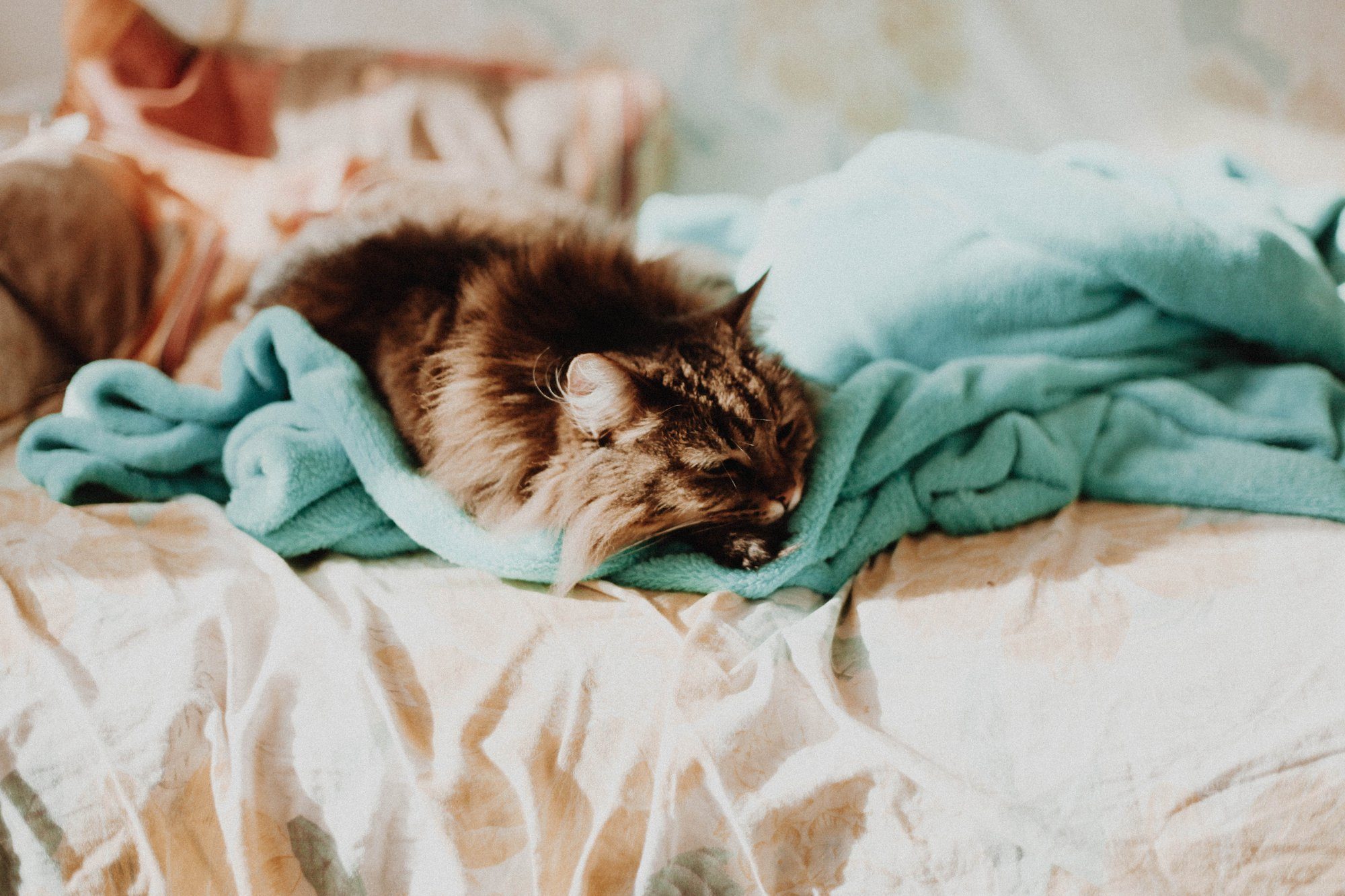October 16, 2019 |5 min read
How to Deal With Pesky Allergies & Pet Dander in Your Home

With the changing of seasons comes sniffling, itchy eyes, and pesky allergies. Pollen is one common allergy-aggravator but pet dander can be a beast of its own. Whether you've lived with cats all your life or you're a new cat parent, allergies can creep up on you when you least expect them.
According to Live Science, "Among children, about one in seven between ages 6 and 19 prove to be allergic to cats." While pet dander is unavoidable if you share your home with animals, learning about how allergies are caused can help you figure out what you can do to minimize symptoms for you, your kiddos, and your loved ones.
Here's what you need to know about pet dander, the causes of cat allergies, and how to deal with them.
How Pet Dander Affects Allergies
If you're an allergen magnet and also can't resist the cute face of a kitten, you've probably looked up ways to adopt a cat by researching hypoallergenic cats. If you've done enough digging, you've likely discovered that there really isn't such a thing.
According to Purina, "Contrary to a popular perception, there are no truly hypoallergenic cats. All cats produce Fel d1 – regardless of breed, age, hair length, hair color, sex, or body weight. Up to 95 percent of reactions in cat allergen-sensitive people are caused by Fel d1. Produced primarily in cats' salivary and sebaceous glands, Fel d1 is transferred to a cat's hair and skin during grooming, then dispersed in the environment via hair and dander (dried flakes of skin)."
Tired of your Use code PRETTYBLOG
home smelling like
you have a cat?
The US National Library of Medicine National Institutes of Health defines Fel d 1 as "a thermostable protein found in the saliva, anal glands, sebaceous glands, skin and fur of cats."
If you suffer from cat allergies, you're likely not actually allergic to cat hair. Rather, your symptoms are a reaction to the protein that ends up on your cat's fur when she grooms herself.
Cat Litter That Prioritizes Their
Health & Your Happiness.
for 20% Off + a FREE Catnip Toy
Scientists Have a Cure for Cat Allergies
Luckily for us all, scientists are hard at work to ensure you can continue to cuddle kittens without an allergic reaction. Researchers have found that a special diet – including an anti-Fel d1 antibody (IgY) that blocks specific Fel d1 traces – was successful in decreasing the levels of the protein in cat saliva glands, thereby reducing cat allergens.

According to a Purina study published in Immunity, Inflammation and Disease, "when cats were fed a diet including this egg product with IgY, 97% showed decreased levels of active Fel d1 on the hair and dander. On average, there was a 47% reduction of active Fel d1 on cats' hair after three weeks of feeding the diet."
Great news for allergy sufferers! So far, the science is looking strong that by decreasing active Fel d1 on a cat's hair, we can also reduce cat allergens that are shed into your environment.
Soon you'll be able to hug fluffy kitties without suffering a runny nose and irritated eyes!
How to Make Allergies Less Bothersome
While laboratories are busy working on a scientific cure for cat allergies, there are a few things you can do at home to reduce the pet dander in your home and your allergy symptoms.
Keep Things Clean
You may spend your weekends deep-cleaning your house but if you're dealing with peeving allergies even after you've scrubbed down your nest, deep-clean your cat's litter-box, too. Your cat's litter-box is one of her most visited places in your house so naturally, it's a cesspool of fur, bacteria, and pet dander.
In-between changing your cat's litter, wash your cat's litter-box with hot soapy water and a give it a good wipe-down with a pet-safe disinfectant.
Wash Upholstery & Linens
If your cat has a free-range to walk around your house and in all of the rooms, wash your curtains, carpets, and bedding often. Fabric can be a trap for pet dander and fur so cleaning your fabrics often with pet-safe laundry detergent will control the airborne allergens and reduce your pesky symptoms.
If there are any soft areas – blankets, towels, pillows – that Fluffy likes to lay on, be sure to wash those regularly. Other hard-to-wash soft surfaces like couches and cat trees should be covered with a removable layer such as a blanket or towel so you can easily collect and discard excess fur and dander.
For more news and information about living with cats, cat health, and cat allergies, subscribe to our newsletter and we'll send it straight to your inbox.






